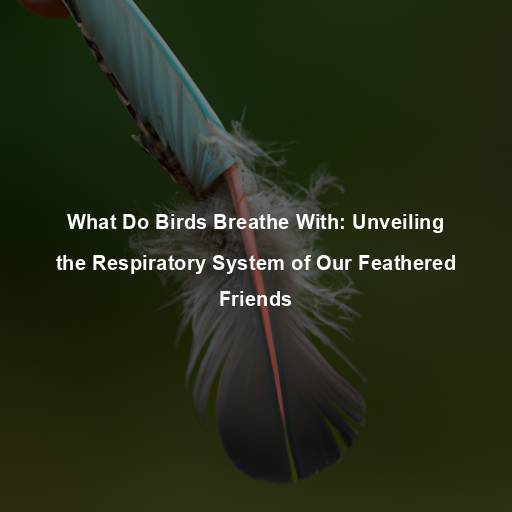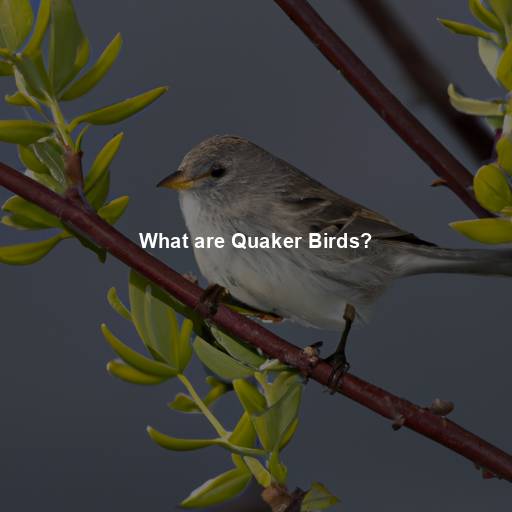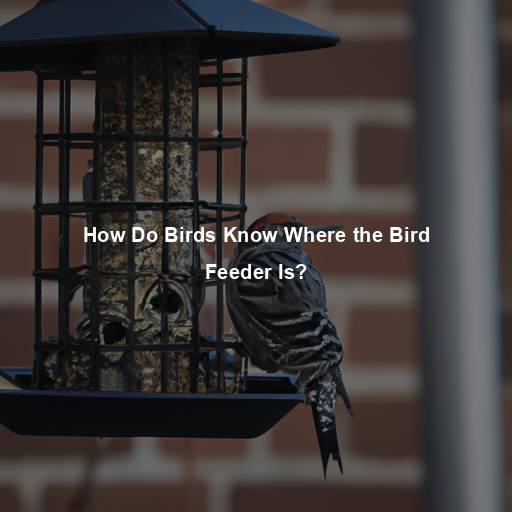What Do Birds Breathe With: Unveiling the Respiratory System of Our Feathered Friends
Last Updated on November 7, 2023 by Evan
Contents [hide]
- 1 A Fascinating Look at Avian Respiration
- 2 The Mechanics of Avian Respiration
- 3 The Advantages of Avian Respiration
- 4 Adaptations: How Birds’ Respiratory System Supports Flight
- 5 Unveiling the Wonders of Avian Respiration
- 6 The Connection Between Respiration and Vocalization
- 7 The Fascinating World of Avian Respiration
- 8 Exploring Avian Respiration Across Species
- 9 The Influence of Environmental Factors on Avian Respiration
- 10 The Marvels of Avian Respiration: A Final Note
- 11 FAQs – What do birds breathe with?
A Fascinating Look at Avian Respiration
In the vast tapestry of nature, few creatures possess the enigmatic allure of birds. Their splendid array of colors and symphonies of song have enchanted the human mind throughout the annals of time. Yet, amidst their ethereal beauty lies a perplexing query: how do these wondrous beings breathe? Today, we embark on an exhilarating exploration of the avian respiratory system, unlocking the mysteries that allow them to navigate the celestial seas with unrivaled grace.
The Basics: How Do Birds Breathe?
Exploring the enigmatic world of avian respiration unveils a captivating tale, rife with captivating complexities. In stark contrast to their mammalian counterparts, the feathered inhabitants of our skies navigate the ethereal realm of breathing without the luxury of a diaphragm. Instead, birds have bestowed upon themselves a sophisticated symphony of lung and air sac interplay, shrouded in a cloud of intrigue. These enigmatic air sacs, dispersed intricately throughout the avian physique, emerge as indispensable players in the avian respiration orchestra, orchestrating a melodious dance of efficient breath-taking prowess.
A Dual Pathway: The Respiratory Cycle of Birds
Did you know that birds have an extraordinary way of breathing that distinguishes them from all other animals? Unlike humans and mammals who take a single breath in and out, birds have a fascinating dual pathway system. This intricate respiratory cycle enables them to effortlessly acquire a steady stream of oxygenated air, making sure they never run out of this life-sustaining element while soaring through the skies. The sheer complexity of this avian respiratory mechanism leaves us awestruck and perplexed at the wonders of nature.
The Mechanics of Avian Respiration
Step 1: Inhalation
During inhalation, air enters the bird’s respiratory system through its beak or nostrils. As the bird breathes in, the air travels through the trachea, a tube-like structure located at the front of the neck. From there, it enters the posterior air sacs, which act as reservoirs for fresh air.
Step 2: Exhalation
During the exhalation process, the air makes its way out of the bird’s posterior air sacs and enters the lungs, marking the beginning of the next phase in respiration. Interestingly, unlike mammals, birds possess lungs that are not as flexible and lack the ability to expand or contract. However, this unique characteristic does not hinder them in maintaining a constant flow of air, ensuring a smooth respiration cycle.
Step 3: Inhalation (Again)
The intricate respiratory system of birds is truly captivating. During the exhale, the air is skillfully directed from the lungs into the remarkable anterior air sacs. Taking their connection to the hollow bones of the bird’s skeleton into account, it is as if the avian anatomy holds the secret to a perplexing puzzle. With each inhale, the fresh air from the anterior air sacs embarks on a journey through the lungs, harmonizing the delicate dance of efficient gas exchange within the avian world.
Step 4: Exhalation (Again)
With each breath, the avian respiratory system embarks on a mesmerizing journey of inhalation and exhalation, orchestrating a symphony of life-sustaining processes. As the feathered creature takes its first breath, oxygen enters through its delicate air sacs, fueling the vital functions that keep it soaring through the skies. In a fascinating dance of biology, the subsequent exhalation expels the stale air, paving the way for the grand performance of the next breath. This complex respiratory cycle showcases the remarkable intricacies of avian respiration, leaving us in awe of nature’s magnificent design.
The Advantages of Avian Respiration
Efficient Oxygenation
Did you know that birds have a fascinating respiratory system that sets them apart from other creatures? It’s a true marvel of nature! Their intricate system ensures that they can efficiently exchange oxygen and carbon dioxide, enabling them to soar through the skies with ease. What’s even more intriguing is that birds have a continuous flow of fresh air, preventing any mixing between the air they inhale and exhale.
Enhanced Endurance
The avian respiratory system provides birds with a significant advantage when it comes to endurance. The continuous airflow and efficient oxygenation enable birds to maintain their high metabolic rates for extended periods, allowing them to undertake long migrations or engage in lengthy flights to forage for food.
Improved Flight Efficiency
Birds have an incredibly complex respiratory system that plays a pivotal role in their awe-inspiring ability to take flight. The dual pathway system, in particular, adds a touch of enigma to their already perplexing biology. With a continuous flow of air, birds effortlessly regulate their body temperature, avoiding the discomfort of overheating during the most demanding aerial maneuvers. This intricate mechanism also safeguards against respiratory fatigue, ensuring that birds can soar with grace and ease through the sky.
Adaptations: How Birds’ Respiratory System Supports Flight
Lightweight Skeleton
Birds, fascinating creatures that they are, have developed a truly remarkable respiratory system that sets them apart from their earthly counterparts. Over time, they have cleverly adapted by developing a lightweight skeletal structure that suits their high-flying lifestyle. This skeletal system, composed of hollow bones intricately linked to their air sacs, serves a dual purpose – it not only supports their delicate frames but also significantly reduces the overall weight of their bodies, allowing these avian wonders to gracefully soar through the skies with unparalleled ease and elegance.
High Metabolic Rate
Birds are fascinating creatures with an extraordinary ability to sustain their energetic lifestyles. One of their remarkable characteristics lies in their high metabolic rate, enabling them to efficiently extract energy from the food they consume. This metabolic prowess is owed, in part, to their remarkable respiratory system, which ensures a continuous influx of oxygen to power their awe-inspiring flights through the skies.
Air Sacs and Efficient Oxygenation
The presence of air sacs throughout the bird’s body enhances their ability to extract oxygen from the air. These air sacs act as reservoirs, maintaining a steady flow of fresh oxygenated air, which is essential for the bird’s high-energy lifestyle.
Unveiling the Wonders of Avian Respiration
Birds, with their ability to soar through the skies, have captured our hearts and imagination. Understanding their unique respiratory system sheds light on their extraordinary feats and unravels the secrets behind their effortless flight. From the dual pathway system to the presence of air sacs, every aspect of avian respiration has evolved to support the bird’s high-energy lifestyle. So, the next time you hear the melodious chirping of a bird, marvel at the wonders of its respiratory system and appreciate the incredible adaptations that allow these feathered creatures to take flight.
The Role of Air Sacs in Avian Respiration
Air sacs play a vital role in the intricate machinery of avian respiration. These delicate structures, intricately entwined with the lungs, perform a multitude of perplexing functions. First and foremost, they serve as veritable reservoirs of rejuvenating air, ensuring an unbroken stream of life-giving oxygen throughout the avian respiratory cycle. Not content with this single task, these elegant air sacs also tackle the challenging mission of regulating a bird’s body temperature, adeptly dissipating excess heat during the soaring ballet of flight.
The Importance of Oxygen in Avian Respiration
In the realm of living beings, birds are no exception when it comes to the dire need for oxygen to keep their metabolic processes flourishing. The sheer essence of oxygen lies in its pivotal role in fueling energy production via the intricate process of cellular respiration. With a respiratory system uniquely tailored for avian wonders, birds can effortlessly tap into a steady stream of oxygen, optimizing the extraction of energy from their selected culinary delights. This generous oxygen supply affords birds the audacious ability to embark on arduous ventures like soaring through vast distances or partaking in mesmerizing airborne exhibitions.
Birds vs. Mammals: Contrasting Respiratory Systems
While mammals and birds share the need for oxygen, their respiratory systems differ significantly. Mammals rely on a diaphragm to facilitate breathing, while birds lack this structure. Instead, birds have evolved a more intricate system that allows for greater efficiency during flight.
The Counter-Current Exchange System
One fascinating aspect of avian respiration is the counter-current exchange system present in their lungs. In this system, the flow of blood within the lung capillaries runs in the opposite direction to the flow of air within the air sacs. This arrangement maximizes the diffusion of oxygen from the air into the bloodstream and minimizes the loss of carbon dioxide from the blood into the air. Consequently, birds can extract a higher percentage of oxygen from each breath and eliminate more carbon dioxide efficiently.
Adaptations for High-Altitude Flying
Some bird species, such as raptors and waterfowl, are known for their ability to fly at high altitudes. To support their high-altitude flights, these birds have developed specific adaptations in their respiratory systems. They possess larger lungs and air sacs, allowing for increased oxygen storage and delivery. Additionally, they have a higher concentration of red blood cells, which enhances oxygen-carrying capacity.
Respiratory Challenges Faced by Birds
While birds have evolved remarkable respiratory adaptations, they still face challenges in certain situations. For instance, when birds fly at extreme altitudes, the lower oxygen levels present difficulties. To overcome this, some species have the ability to enter a state of controlled hypoxia, reducing their oxygen requirements temporarily. Additionally, during strenuous activities, such as prolonged flapping flights or intense vocalizations, birds may experience respiratory fatigue.
The Connection Between Respiration and Vocalization
The Synergy of Breathing and Singing
The symphony of bird melodies has always fascinated us, with each feathered creature showcasing its own distinct vocal repertoire. It leaves us perplexed, pondering how these intricate tunes are formed. As it turns out, it all lies in the avian respiratory system, where the magic unravels. Birds possess a remarkable control over airflow and can manipulate air pressure like no other, allowing them to craft an astounding array of sounds.
The Role of Airflow in Vocalization
Birds are truly remarkable creatures when it comes to producing enchanting vocalizations. Through an intricate interplay of their respiratory muscles and the magical syrinx, they are able to achieve an extraordinary range of pitches, volumes, and rhythms. What makes this even more fascinating is how birds manage to sustain these melodious outpourings, all the while ensuring their essential need for oxygen remains fulfilled. It’s truly a testament to the avian respiratory system’s efficiency and their awe-inspiring ability to harmonize breathing and music.
The Fascinating World of Avian Respiration
Delving into the complex inner workings of avian respiration opens a door to a world of fascination and admiration for the extraordinary capabilities of birds. With their extraordinary dual-pathway system and the presence of air sacs, birds have mastered the art of extracting oxygen efficiently and adapting to high altitudes. The marvel of their respiratory system is magnificently displayed as they effortlessly take flight, grace us with their enchanting melodies, and amaze us with their endurance. The next time you witness a bird soaring through the sky or serenading the world with its song, take a moment to contemplate the intricate adaptations that allow these feathered beings to rise above all others.
The Aerodynamic Advantage
The wondrous respiratory system of birds sets them apart from all other creatures, serving as the ultimate powerhouse for their buzzing metabolisms and captivating flight maneuvers. It’s rather mind-boggling how the very same system that keeps these feathered marvels alive also grants them a mesmerizing advantage in the realm of aerodynamics. With lungs so efficient and air sacs so intricately interconnected, these avian wonders effortlessly conquer the vast skies, leaving us in a perplexing state of awe and admiration.
The Role of Airflow in Flight
When birds spread their wings and soar up into the sky, the intricate workings of their respiratory system come into play, like a symphony of equilibrium and agility. The ceaseless stream of invigorating air dances through their bodies, like a cooling breeze on a scorching summer day, warding off any risk of getting too hot under the feathery collar. Moreover, this harmonious exchange of gases ensures a steadfast oxygen delivery to the avian aviators’ flight muscles, enabling them to gracefully embrace prolonged periods of airborne grace.
The Connection Between Respiration and Wingbeat
The mesmerizing symphony of avian flight unfolds with a captivating dance between breath and feather. With each beat of their wings, birds seamlessly weave the delicate rhythm of respiration into their aerial tapestry. Inhaling, their chests rise in harmony with an ethereal upward stroke, exhaling as their wings retreat earthward in a graceful cascade. This exquisite choreography synergizes to unleash the full potential of their energy stores, while ensuring unwavering equilibrium throughout their soaring expedition.
Exploring Avian Respiration Across Species
Diverse Adaptations in Respiration
It’s truly fascinating how birds have evolved such diverse respiratory systems to thrive in different environments and ecological roles. Take penguins, for instance, these diving marvels have finely tuned adaptations that allow them to hold their breath underwater for longer durations. Their respiratory system ingeniously directs the air away from their lungs and into air sacs, helping them avoid nitrogen narcosis while ensuring efficient respiration during their dives. Such intricate adaptations remind us of the awe-inspiring complexity and adaptability of the avian world.
Respiration in Songbirds
Songbirds, known for their melodious calls and complex songs, possess a specialized respiratory system that facilitates their vocalizations. The coordination between the respiratory muscles, syrinx, and vocal cords allows them to produce intricate melodies and mimic a wide range of sounds. The ability to control airflow and breath control plays a crucial role in the clarity and complexity of their songs.
Respiration in Birds of Prey
Birds of prey, such as eagles and hawks, rely on their exceptional visual acuity and agility to capture prey. Their respiratory system supports their hunting behavior by providing the necessary oxygen for high-energy flights and sharp visual focus. These birds have evolved adaptations that allow for efficient respiration during high-speed pursuits, enabling them to maintain their predatory skills at the highest level.
The Influence of Environmental Factors on Avian Respiration
Altitude and Oxygen Availability
Altitude plays a significant role in avian respiration, as it directly affects the availability of oxygen. Birds that inhabit high-altitude regions, such as the Andean Condor, have adapted to survive in low-oxygen environments. Their respiratory systems have evolved to extract oxygen more efficiently, allowing them to thrive in these challenging habitats.
Climate and Heat Regulation
Birds living in diverse climates face the challenge of regulating their body temperature. The respiratory system plays a crucial role in dissipating excess heat during hot weather. By panting or gular fluttering (rapid movement of the throat muscles), birds increase the airflow over their respiratory surfaces, facilitating heat loss through evaporation.
Pollution and Respiratory Health
The quality of the air we breathe isn’t just a concern for us bipedal creatures. Oh no, our feathered friends are also feeling the effects! You see, those little urban-dwelling birds are really struggling when it comes to catching their breath. It turns out that all those pesky pollutants floating around can really mess with their lungs and make things pretty uncomfortable for them.
The Marvels of Avian Respiration: A Final Note
The intricate respiratory system of birds is a testament to the wonders of nature’s adaptations. From the efficient extraction of oxygen to the coordination of respiration with flight and vocalization, avian respiration enables these remarkable creatures to thrive in diverse habitats and engage in behaviors that captivate our imagination. As we continue to explore the world of birds, let us remember the integral role their respiratory system plays in their extraordinary lives and appreciate the marvels of their adaptation to the skies.
FAQs – What do birds breathe with?
What do birds breathe with?
Birds, fascinating creatures of the sky, possess a mysterious mechanism for their very survival – oxygen intake. Astonishingly, unlike us humans and other mammals, birds display an enigmatic departure from convention by not relying on their mouth or nose for this vital task. Instead, their flabbergasting respiratory system boasts an unconventional apparatus featuring air sacs, distinctive in nature and function.
How do birds breathe with their air sacs?
Birds possess a fascinating anatomical feature that sets their respiration system apart. Through a complex network of air sacs, birds achieve an unparalleled efficiency in breathing. When a bird takes in a breath, it embarks on a perplexing journey within its body, where air traverses a labyrinth of trachea and interconnected air sacs. The process begins with the posterior air sacs, which act as the entry point, guiding the air to the lungs. There, a wondrous exchange occurs, as oxygen is absorbed, and carbon dioxide is expelled. Yet, the enigmatic nature of avian respiration does not end there. Upon exhalation, the air ingeniously navigates its way to the anterior air sacs, forming a continuous passage, akin to an intricate dance, ensuring a constant flow of fresh revitalizing air throughout the bird’s respiratory system.
Can birds breathe through their beaks?
Contrary to popular belief, birds do not rely on their beaks as a respiratory tool. Instead, these magnificent creatures primarily employ their beaks for nourishment, dexterity, and even serenading us with enchanting melodies. The intricate process of breathing, my friend, occurs deep within their intricate respiratory system, entailing a harmonious dance between their lungs and air sacs. So, rest assured, the beak plays no part in their ethereal act of respiration.
Do birds have lungs?
Yes, birds do have lungs. However, the structure of their lungs is quite different from that of mammals. Bird lungs are smaller and denser, allowing them to be more effective in extracting oxygen from the air. Additionally, birds have a unique system of air capillaries that surround the lungs, increasing the surface area available for gas exchange.
Can birds breathe at high altitudes?
The natural wonders of birds unfold as they navigate the vast skies, defying the perplexing challenges of high altitudes. With their marvelously adapted respiratory systems, these avian creatures effortlessly draw life-sustaining oxygen from the thin air. Evolving alongside the ethereal presence of air sacs, birds have carved their paths through the heavens, embarking on mystical migrations that showcase their exceptional respiration abilities.
Do birds ever hold their breath?
Birds have a fascinating respiratory system that sets them apart from us mere humans. Unlike us, they don’t intentionally hold their breath. Instead, their remarkable air sacs and the perpetual flow of air through their lungs guarantee a steady stream of life-giving oxygen. It might seem counterintuitive, but if birds were to hold their breath, it would disrupt their meticulous oxygen gathering process and hinder their ability to eliminate carbon dioxide – an essential task for their survival and energy requirements. Nature certainly knows how to keep us on our toes!
Can birds breathe underwater?
Contrary to popular belief, birds are not equipped with gills for underwater respiration, making it impossible for them to breathe beneath the water’s surface. Though certain bird species possess impressive swimming and diving abilities, they rely on their breath-holding prowess rather than extracting oxygen from aquatic environments. Once submerged, birds tap into their incredible lung capacity and air sac system to obtain much-needed oxygen upon resurfacing. So while they may dabble in underwater escapades, breathing underwater is just not on the avian agenda.
How do birds breathe while flying?
When birds take flight, their respiratory prowess becomes a marvel to behold. The way they effortlessly draw in copious amounts of oxygen-rich air, keeping their wings in graceful motion, defies comprehension. With each beat of their wings, they masterfully control the flow of air through an intricate network of air sacs, ensuring a steady supply of life-giving oxygen to fuel their magnificent, graceful flight. It is this incomparable respiratory artistry that propels birds to unparalleled heights of aerial majesty.







